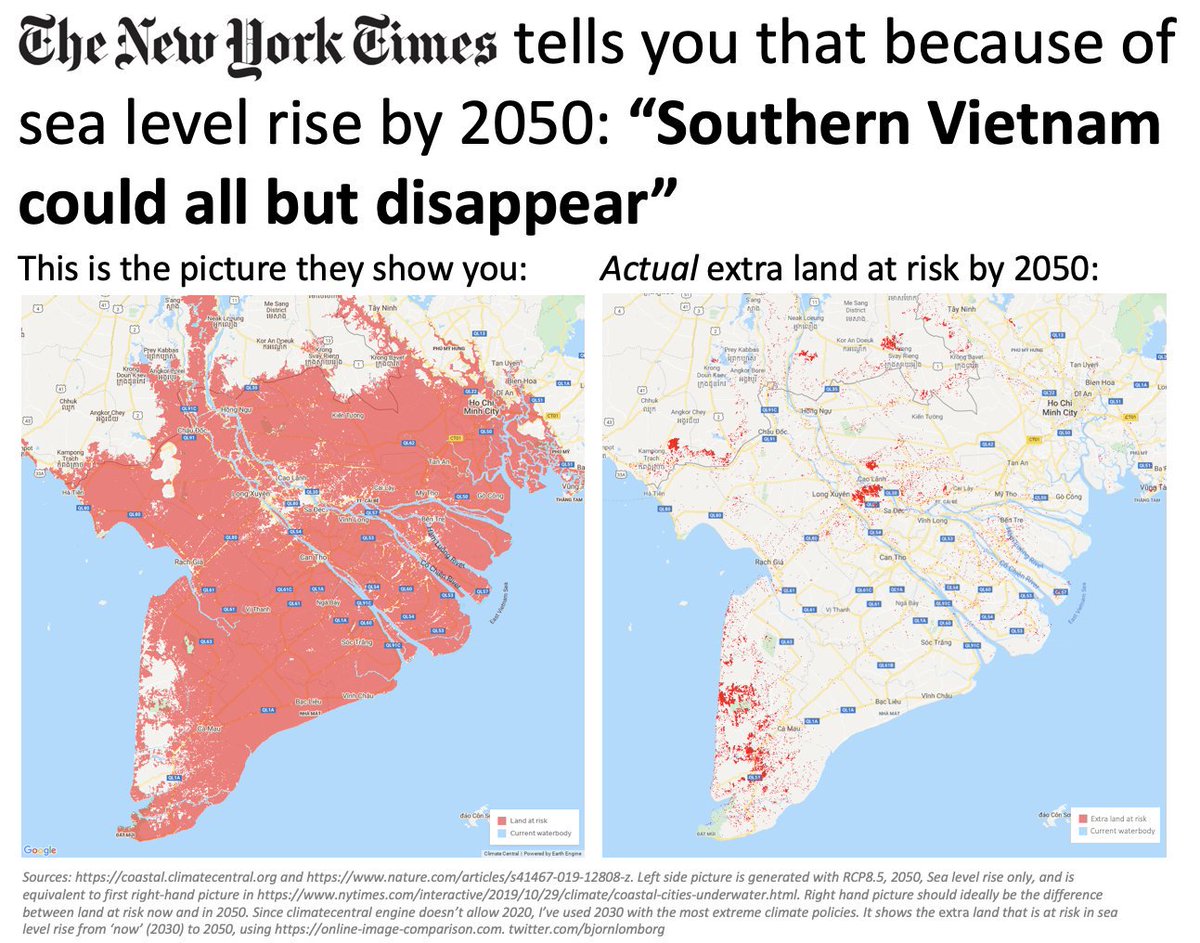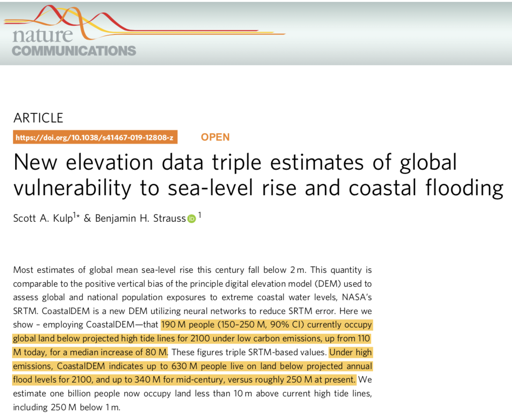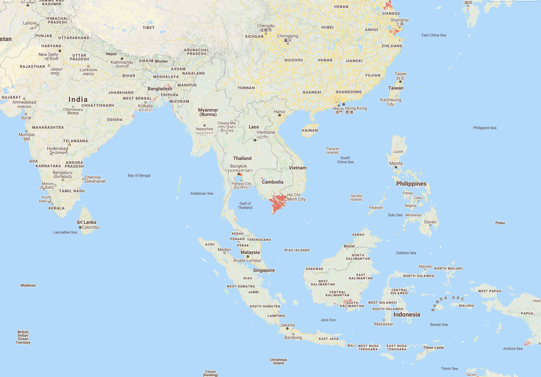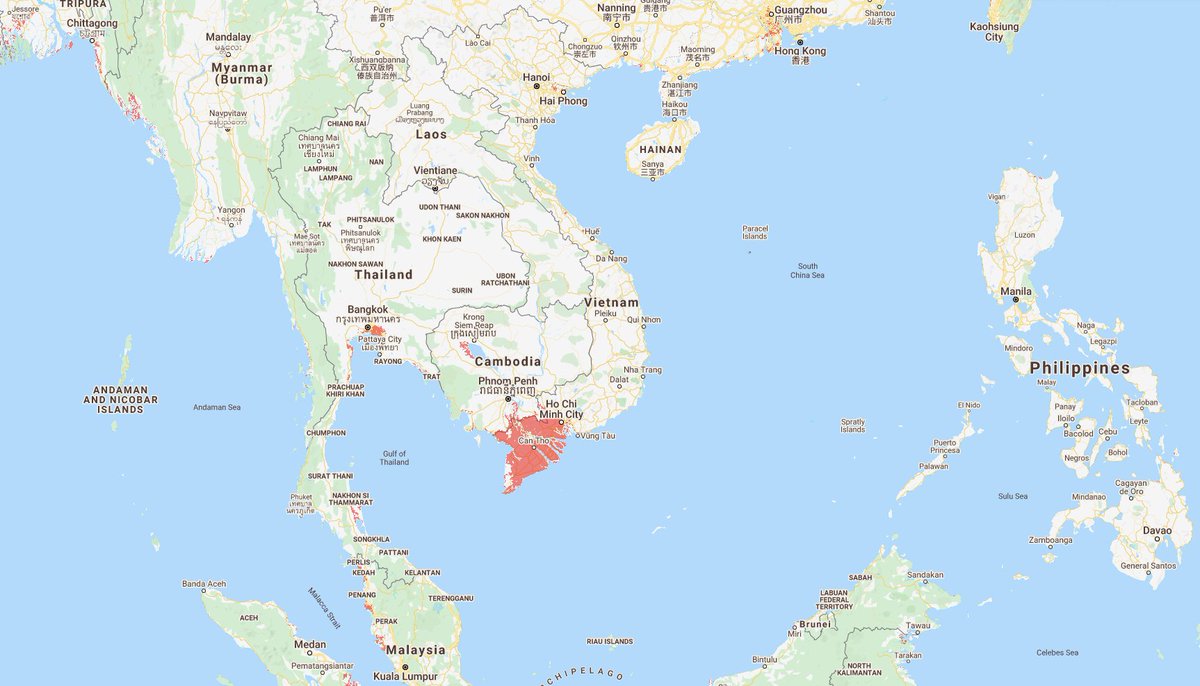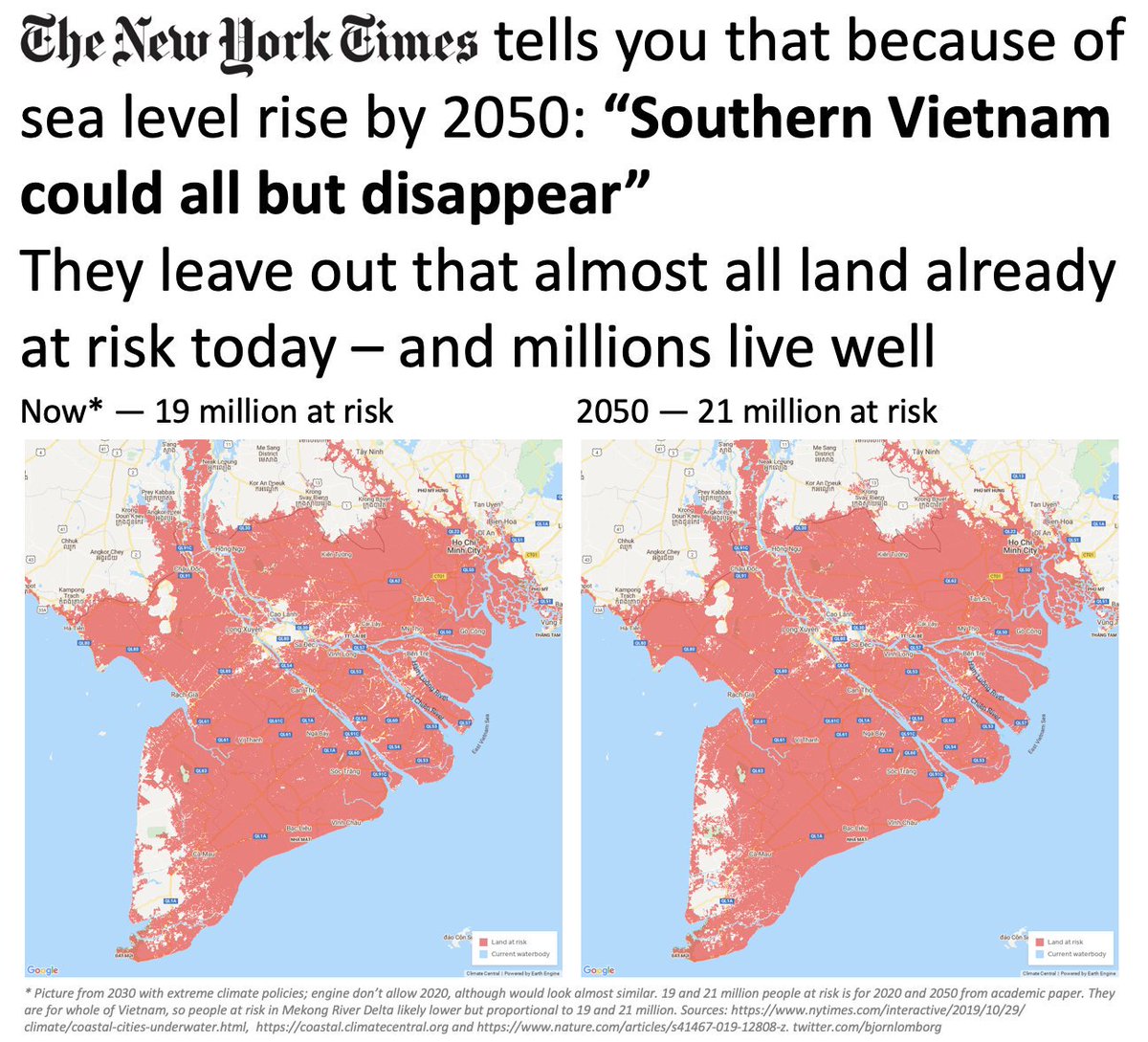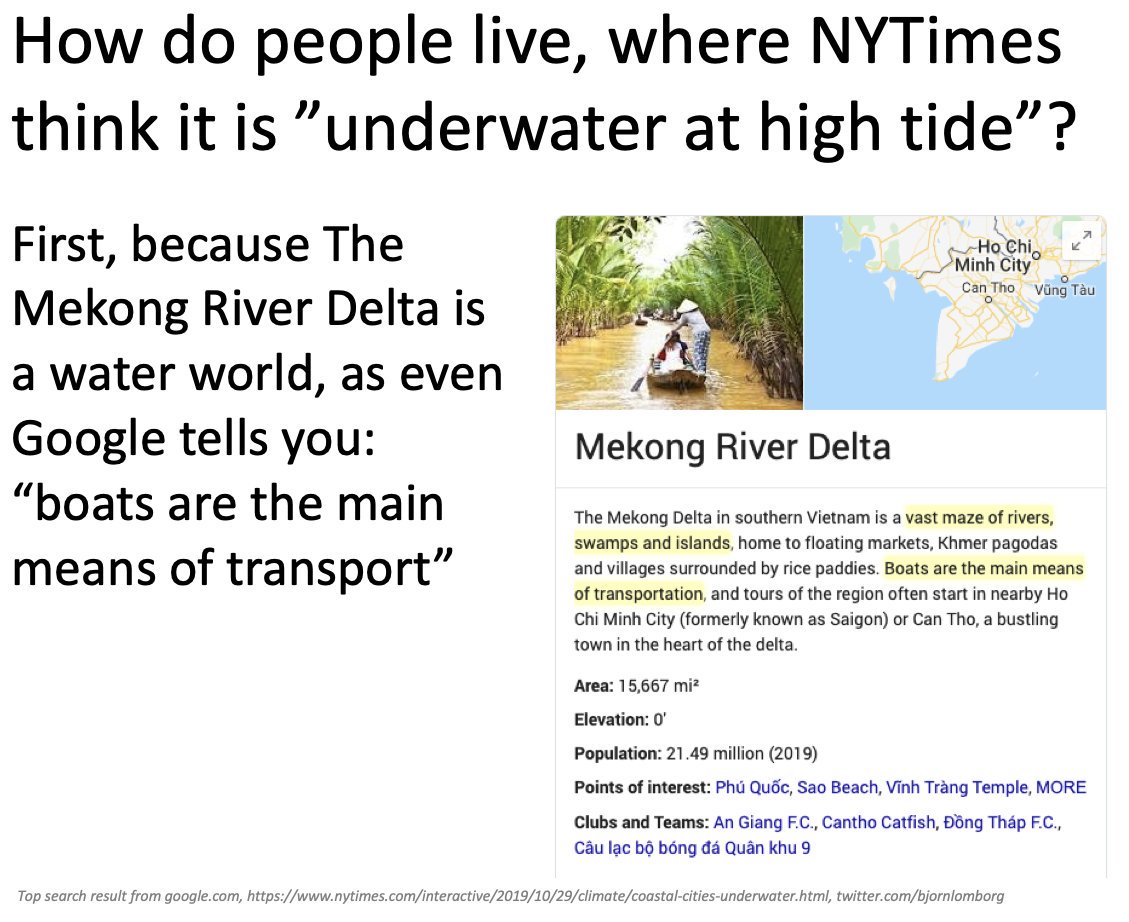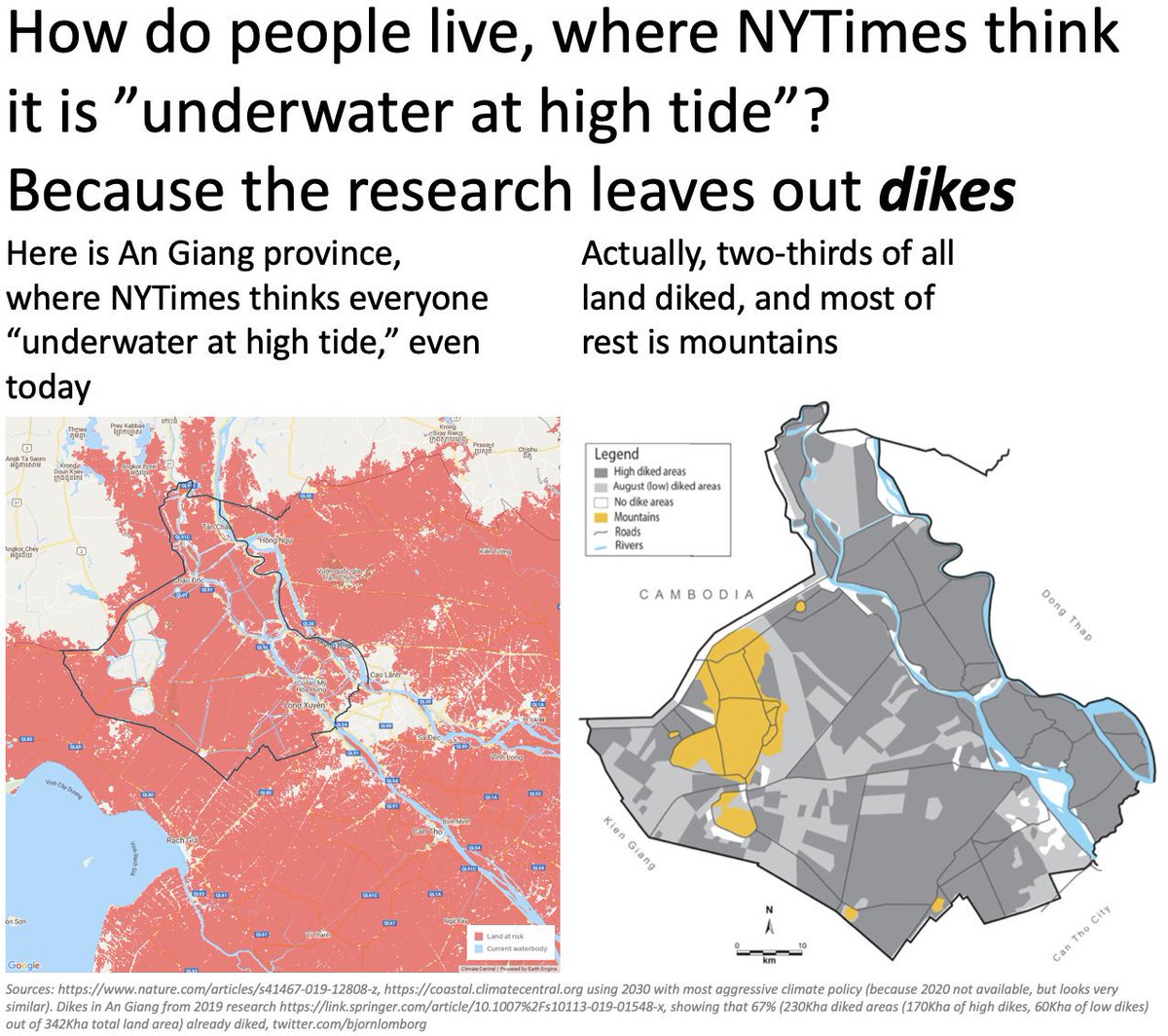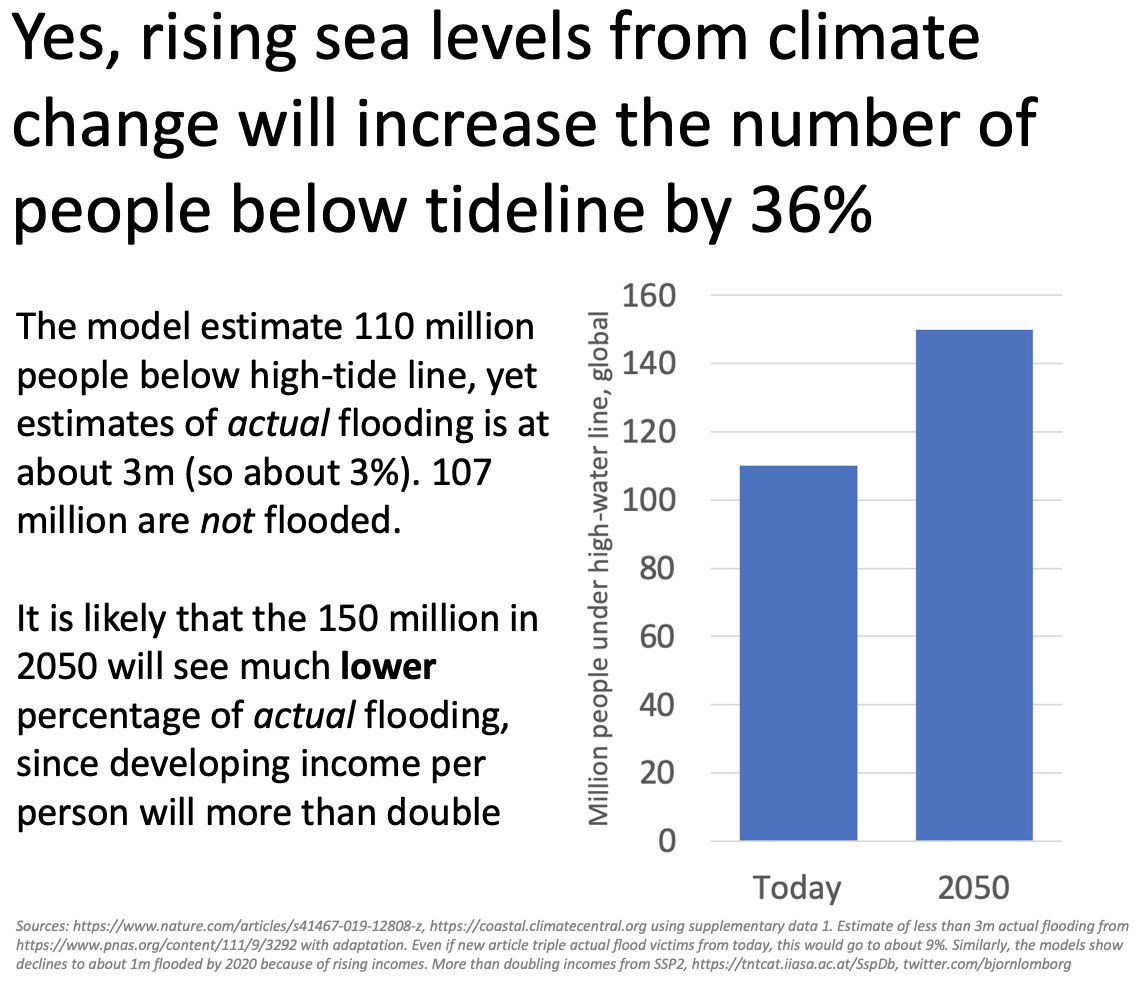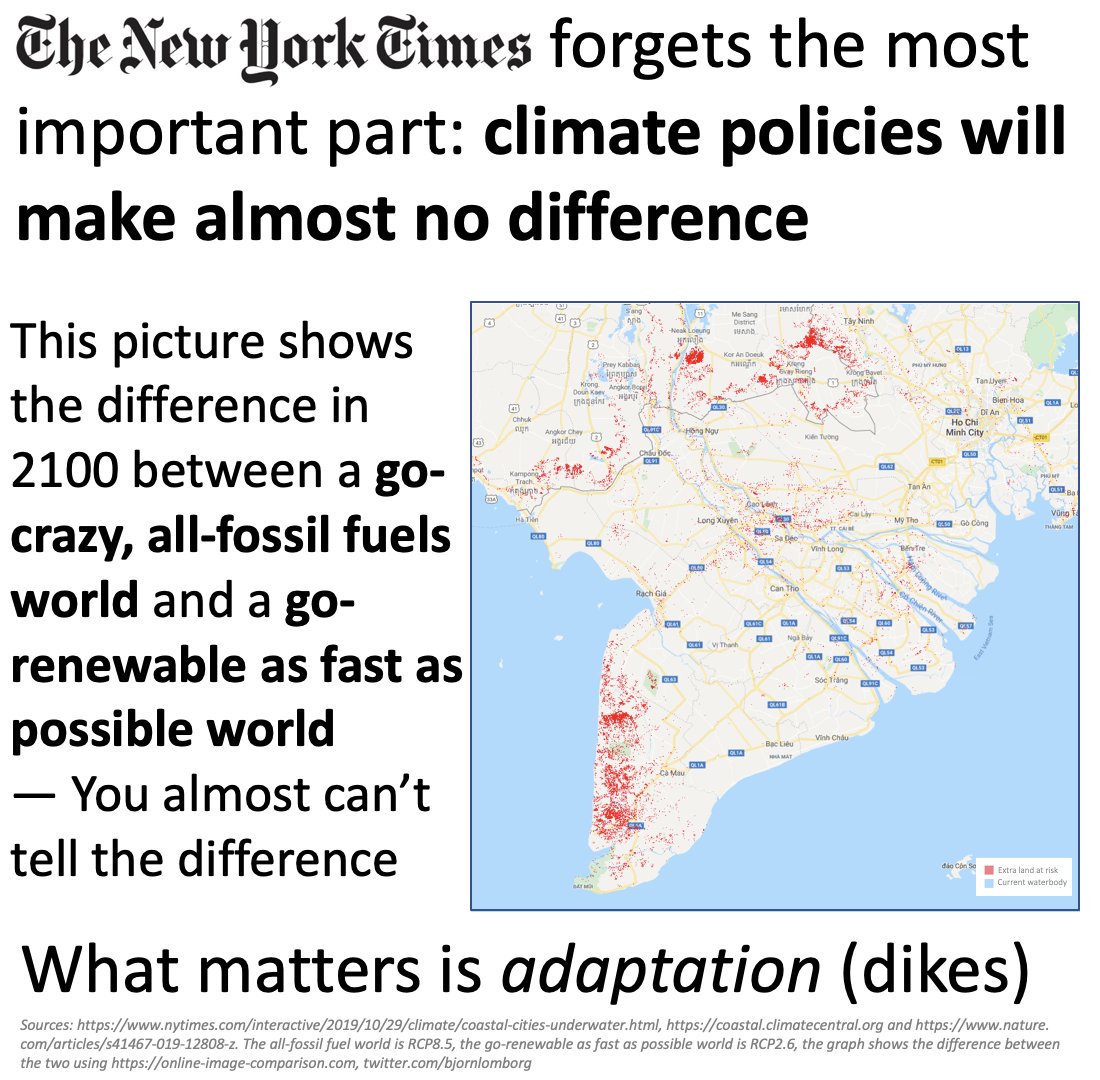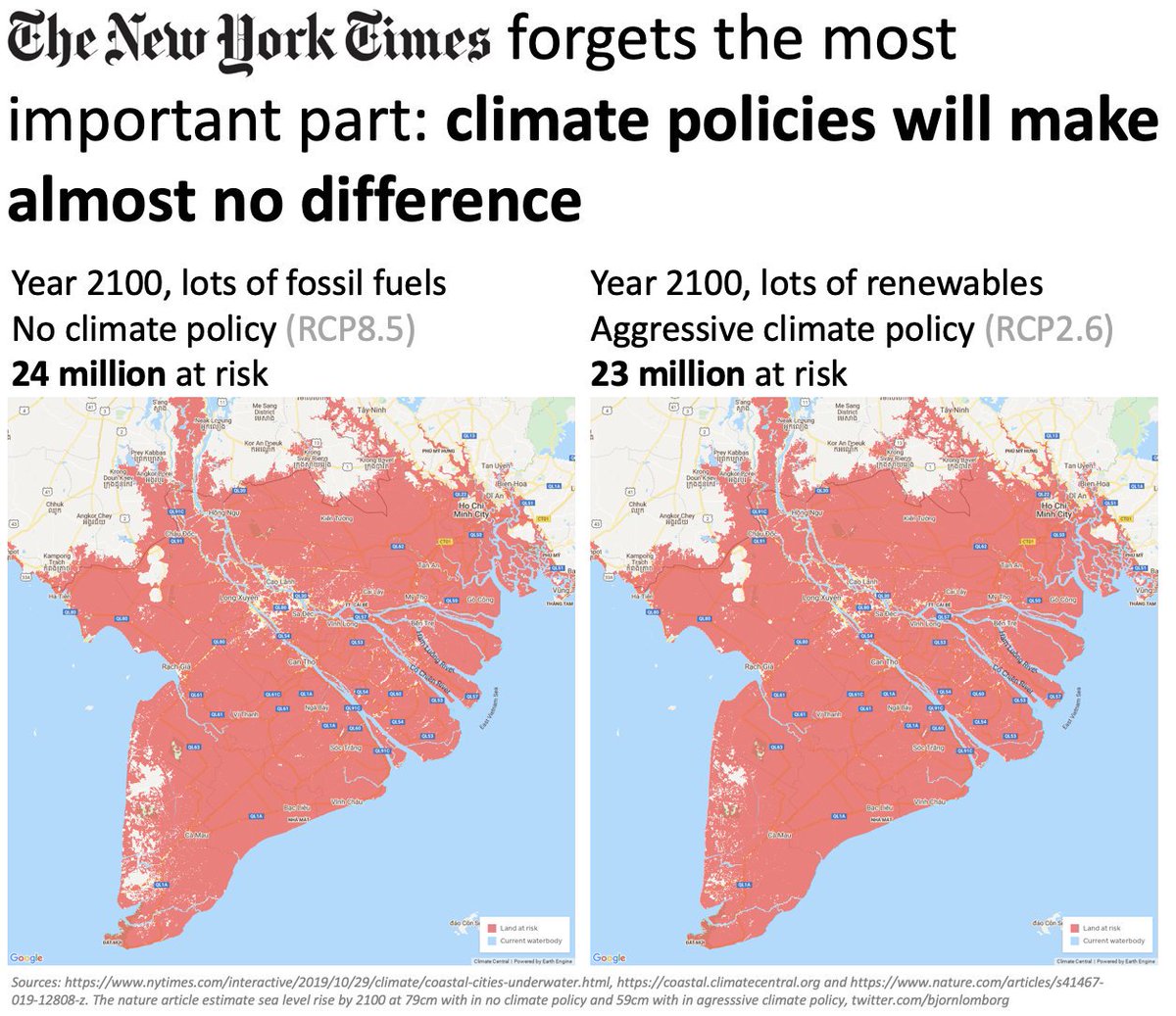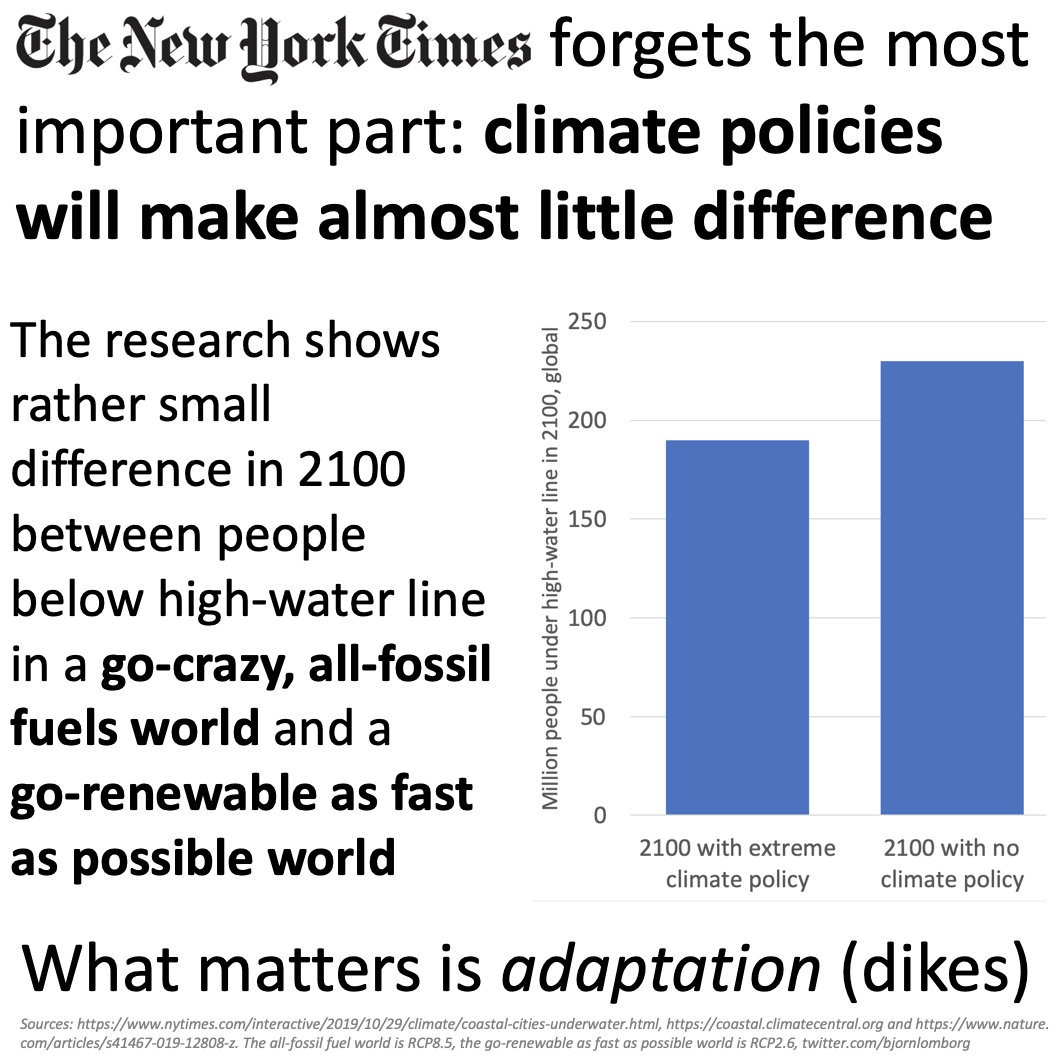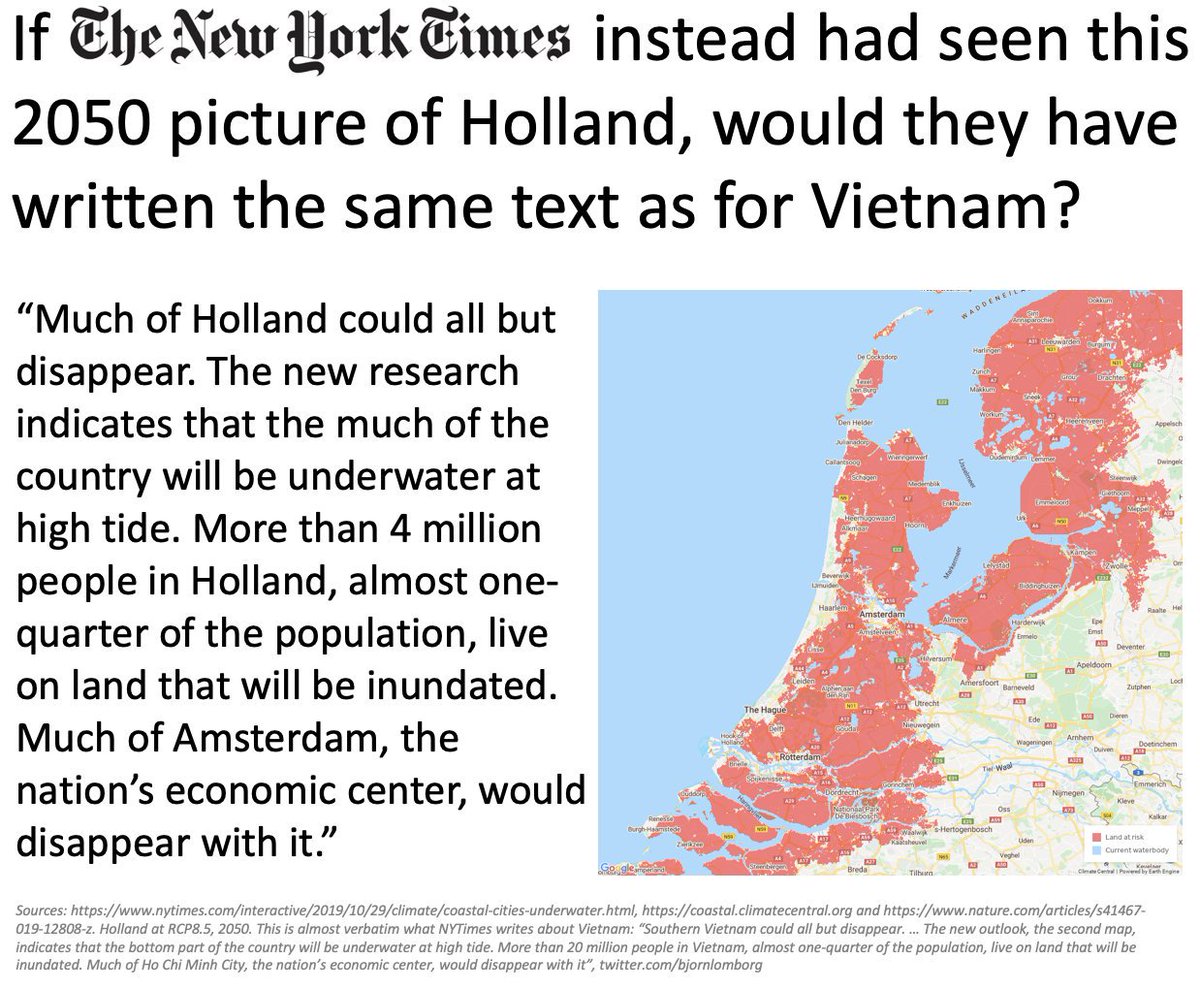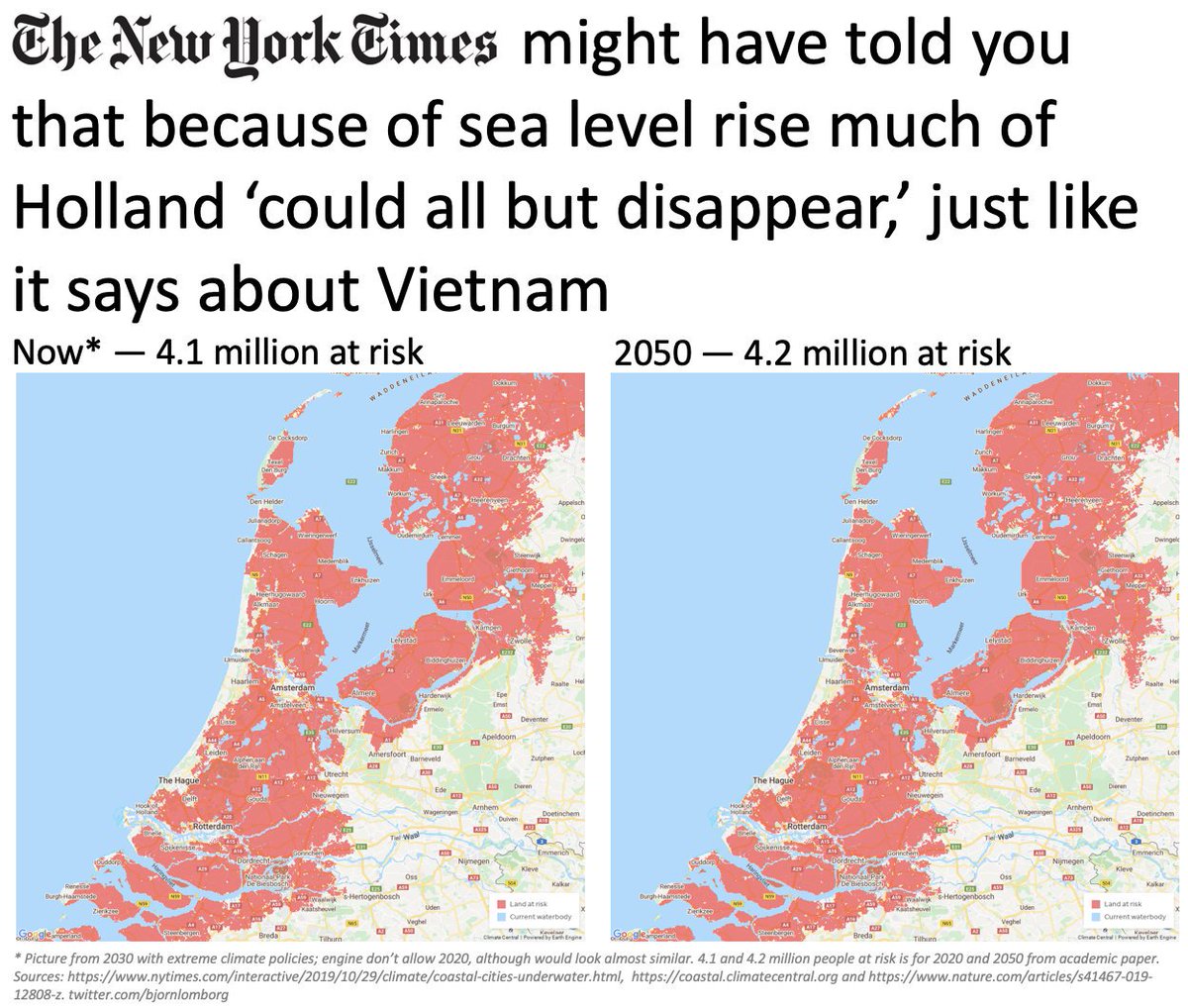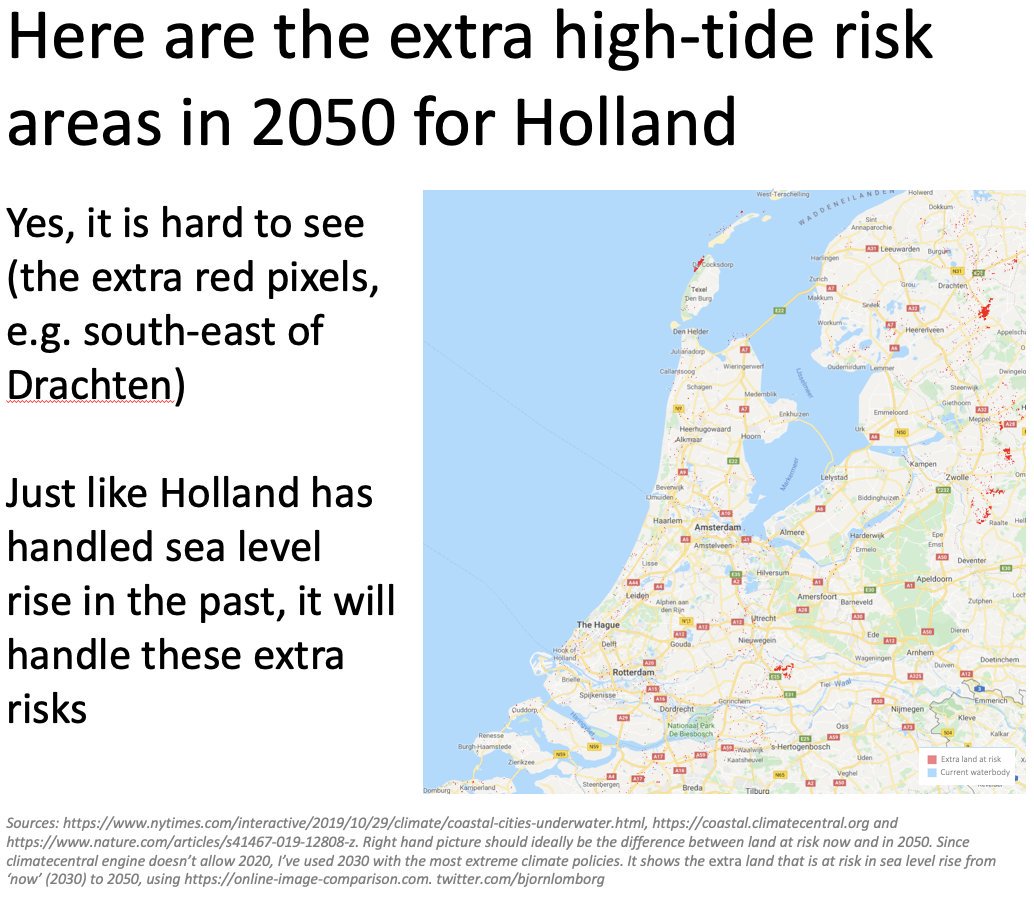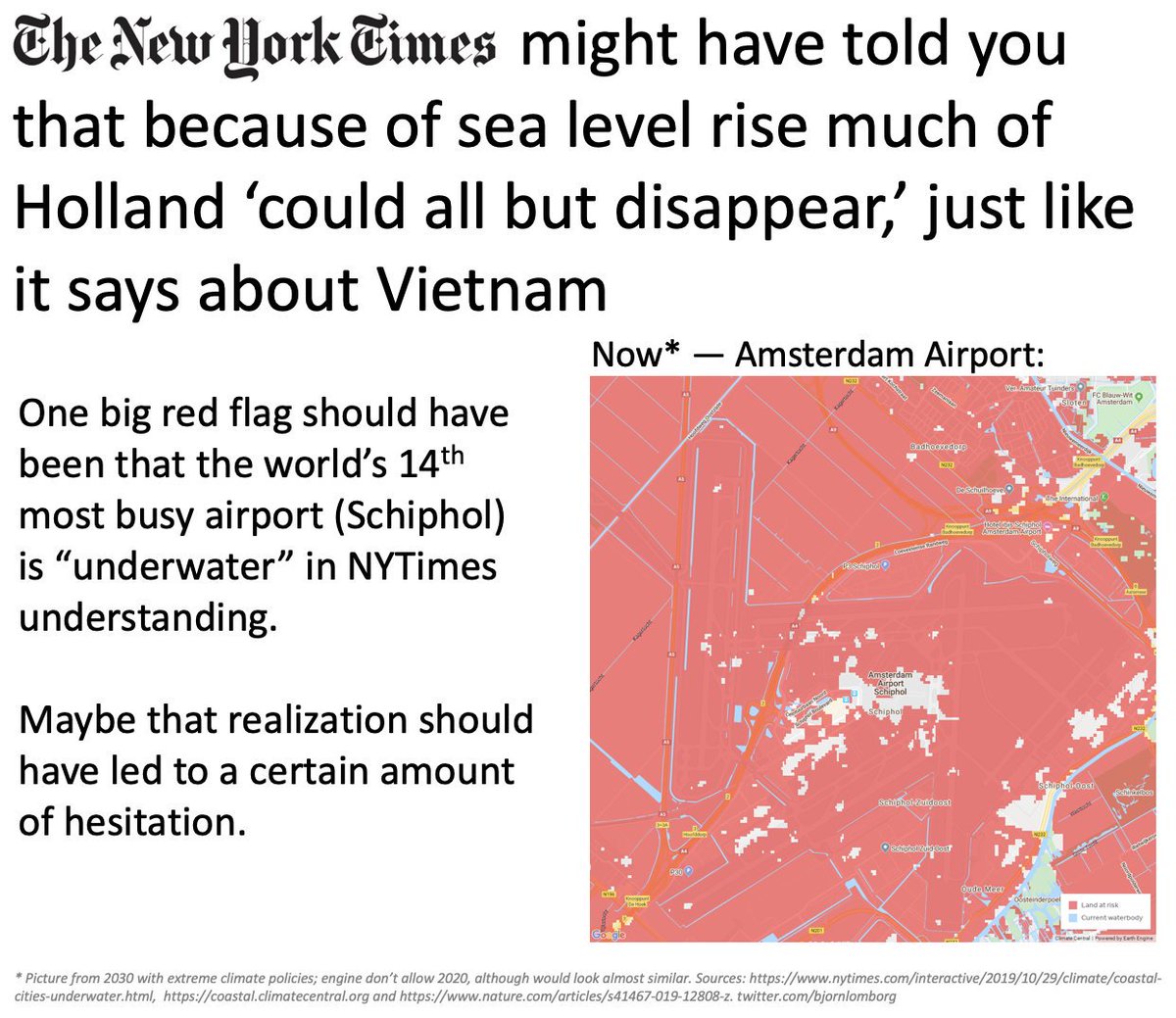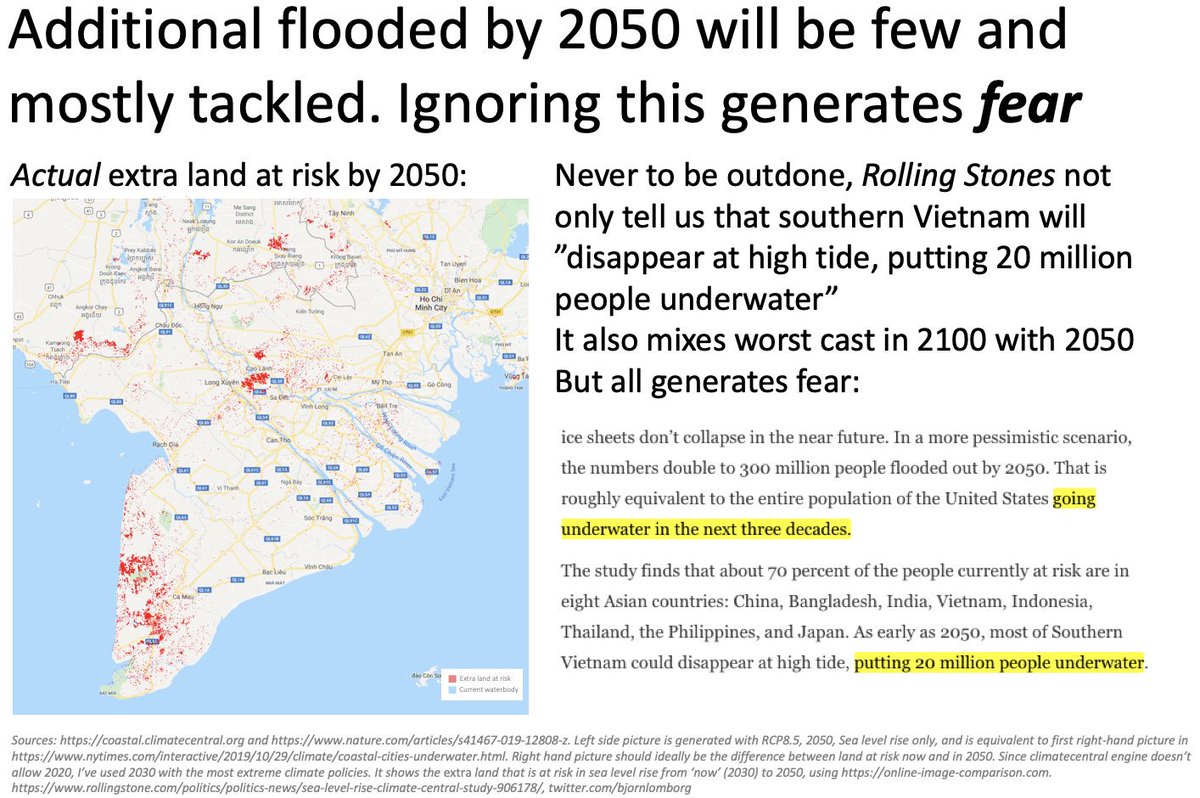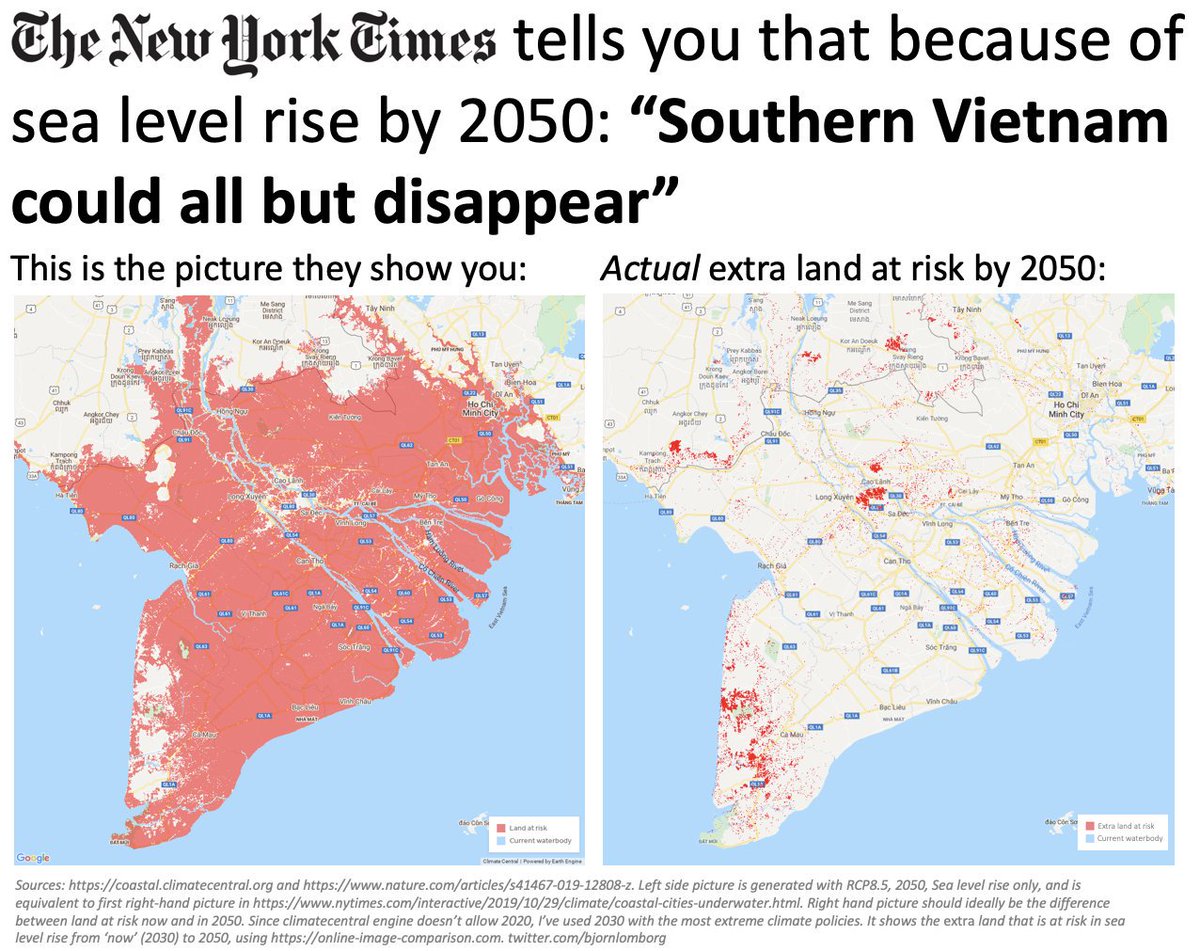New York Times ran a sensational story on how many places will soon be underwater
Unfortunately,
it misuses data to conclude disaster, creating unreasonable fear
https://www.nytimes.com/interactive/2019/10/29/climate/coastal-cities-underwater.html,">https://www.nytimes.com/interacti... https://coastal.climatecentral.org"> https://coastal.climatecentral.org
Unfortunately,
it misuses data to conclude disaster, creating unreasonable fear
https://www.nytimes.com/interactive/2019/10/29/climate/coastal-cities-underwater.html,">https://www.nytimes.com/interacti... https://coastal.climatecentral.org"> https://coastal.climatecentral.org
Now, let& #39;s get this clear:
1) Global warming is real, and
2) The research, they reference, looks good and useful, finding a better estimate for number of people potentially vulnerable to sea level rise
https://www.nature.com/articles/s41467-019-12808-z">https://www.nature.com/articles/...
1) Global warming is real, and
2) The research, they reference, looks good and useful, finding a better estimate for number of people potentially vulnerable to sea level rise
https://www.nature.com/articles/s41467-019-12808-z">https://www.nature.com/articles/...
Also kudos to Climate Central for making almost all of the data available online — here you can see at risk for flooding for 2050
(the only missing visualization is for 2020/today, as will become clear below)
They do include that info in academic article
https://coastal.climatecentral.org"> https://coastal.climatecentral.org
(the only missing visualization is for 2020/today, as will become clear below)
They do include that info in academic article
https://coastal.climatecentral.org"> https://coastal.climatecentral.org
Of course, New York Times emphasizes Vietnam, as it is the most obvious and one of the biggest places where large areas are potentially underwater at high tide
So, how does NYTimes end up saying that "Southern Vietnam could all but disappear" because of sea-level rise from global warming, when actual additional land at risk is slight?
It is because they leave out that *today* almost as many are living & #39;at risk& #39; and clearly still living there
Second, the research leaves out coastal defenses
This is not unreasonable as research (that was not their topic), but of course, it makes it absolutely silly to make claims about real-life impacts without looking at actual adaptation
This is not unreasonable as research (that was not their topic), but of course, it makes it absolutely silly to make claims about real-life impacts without looking at actual adaptation
Actual people in south Vietnam, in the An Giang province, live well, because they have protected most of their land — although NYTimes would claim they would be underwater
This one province produces almost 1% of the world& #39;s rice!
https://link.springer.com/article/10.1007%2Fs10113-019-01548-x">https://link.springer.com/article/1...
This one province produces almost 1% of the world& #39;s rice!
https://link.springer.com/article/10.1007%2Fs10113-019-01548-x">https://link.springer.com/article/1...
If anything, the NYTimes article and the background research underscores that we are eminently able to tackle sea-level rise, because today 19 million people live in Vietnam below the high-water line, and most thrive
Yes, more people will be below the tide-line in 2050 because of sea-level rise, but it is likely that the *actual* number of people flooded will decline, not the least because developing income will more than double
https://tntcat.iiasa.ac.at/SspDb ">https://tntcat.iiasa.ac.at/SspDb&quo...
https://tntcat.iiasa.ac.at/SspDb ">https://tntcat.iiasa.ac.at/SspDb&quo...
And in its excitement to create worry, the NYTimes seems to forget the most important outcome of the new study:
Even the strongest climate policy will make little difference
What matters to improve people& #39;s lives is adaptation
Even the strongest climate policy will make little difference
What matters to improve people& #39;s lives is adaptation
The most important outcome of the new study:
Even the strongest climate policy will make little difference
What matters to improve people& #39;s lives is adaptation
Even the strongest climate policy will make little difference
What matters to improve people& #39;s lives is adaptation
The most important outcome of the new study:
Even the strongest climate policy will make little difference also globally
What matters to improve people& #39;s lives is adaptation
Even the strongest climate policy will make little difference also globally
What matters to improve people& #39;s lives is adaptation
One has to wonder if NYTimes was misled by its prejudice to interpret an easy graph showing southern Vietnam almost entirely underwater in 2050 as catastrophe.
What would have happened if they had seen the same 2050 graph for Holland?
Would they have paused?
What would have happened if they had seen the same 2050 graph for Holland?
Would they have paused?
Looking at the additional high tide risk areas for Holland in 2050, it is hard to tell any extra ones
Maybe NYTimes should have hesitated when they saw the world& #39;s 14th largest airport underwater.
(Again, academically correct, if you ignore dikes, but not good for predicting the end of Holland)
(Again, academically correct, if you ignore dikes, but not good for predicting the end of Holland)
NYTimes should have shown us a new understanding of the issue of sea-level rise: Yes, challenge, but one we& #39;ve already mostly successfully tackled for 110 million people around the world
Instead, this misuse of an almost entirely red map for southern Vietnam generates *fear*
Instead, this misuse of an almost entirely red map for southern Vietnam generates *fear*
Many outlets ran with this, telling us that sea-level rise will put 20 million underwater, instead of actually showing us we& #39;re tackling it for almost 110 million now

 Read on Twitter
Read on Twitter